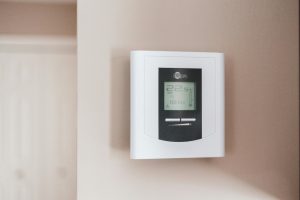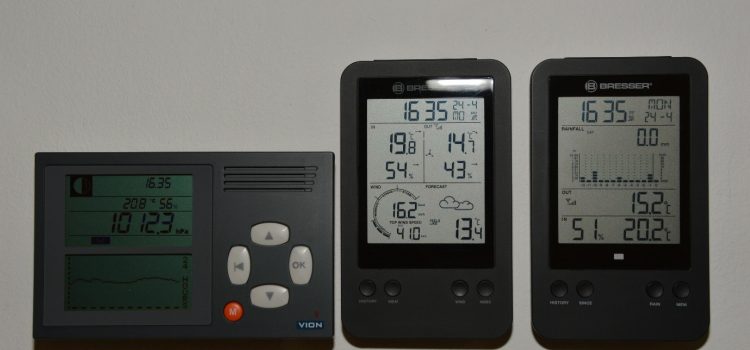
The Rise of Smart Thermostats: Energy Efficiency Trends
The growing concerns about energy consumption and the need for sustainable solutions have given rise to innovative technologies. Among these, smart thermostats have emerged as a significant development in energy management. This article delves into the trends in energy efficiency brought about by smart thermostats, examining their impact, advantages, and future prospects.

Understanding Smart Thermostats
Smart thermostats are advanced devices that allow users to control their home heating and cooling systems via smartphones, tablets, or computers. Unlike traditional thermostats, these devices can learn user preferences, schedule climate control, and optimize energy usage. Major players in the market include Nest, Ecobee, and Honeywell, each offering various features to cater to different user needs.
The Technological Backbone
Connectivity and Integration
Smart thermostats leverage Wi-Fi connectivity to provide remote access and control. They integrate with various smart home systems, including Amazon Alexa, Google Assistant, and Apple HomeKit, enhancing their usability and convenience. This integration allows for seamless automation and control, contributing to a more efficient energy management system.
Machine Learning and AI
One of the most notable features of smart thermostats is their ability to learn and adapt. Through machine learning algorithms, these devices analyze user behavior and environmental conditions to create optimal heating and cooling schedules. This personalization leads to significant energy savings without compromising comfort.
Energy Efficiency Trends
Reduced Energy Consumption
Smart thermostats have been proven to reduce energy consumption significantly. According to studies, they can save up to 10-12% on heating and 15% on cooling costs. This reduction is achieved through features like geofencing, which adjusts the temperature based on the user’s location, and adaptive learning, which fine-tunes the temperature settings over time.
Environmental Impact
The environmental benefits of smart thermostats are substantial. By reducing energy consumption, these devices contribute to lower greenhouse gas emissions. This aligns with global efforts to combat climate change and promote sustainability. Additionally, the data collected by smart thermostats can be used to further improve energy efficiency measures at both household and community levels.
Cost Savings
For consumers, the financial savings are a significant incentive. The initial investment in a smart thermostat is offset by the long-term reduction in energy bills. Many utility companies also offer rebates and incentives for installing smart thermostats, making them an even more attractive option.
Comparative Analysis
To better understand the impact of smart thermostats, let’s compare them with traditional thermostats in terms of energy efficiency, user convenience, and overall cost.
| Feature | Smart Thermostats | Traditional Thermostats |
| Energy Efficiency | High (10-15% savings) | Low |
| User Convenience | High (remote access, automation) | Low (manual operation) |
| Initial Cost | Higher | Lower |
| Long-term Savings | Significant | Minimal |
| Environmental Impact | Positive (reduced emissions) | Neutral |
Market Adoption and Trends
Increasing Adoption Rates
The adoption of smart thermostats is on the rise. A report by Navigant Research indicates that the global market for smart thermostats is expected to grow significantly over the next decade. Factors driving this growth include rising energy costs, increasing awareness of energy efficiency, and advancements in smart home technologies.
Technological Advancements
Continuous advancements in technology are enhancing the capabilities of smart thermostats. Features such as voice control, predictive maintenance alerts, and enhanced user interfaces are making these devices more user-friendly and efficient. The integration with renewable energy sources like solar panels is also on the horizon, which could further boost their energy-saving potential.
Regulatory Support
Government regulations and policies are increasingly supporting the adoption of energy-efficient technologies. Initiatives like the Energy Star program in the United States provide certification and incentives for products that meet strict energy efficiency guidelines. Such policies are expected to drive the adoption of smart thermostats further.
Future Prospects
Integration with Smart Grids
One of the promising future trends is the integration of smart thermostats with smart grids. This integration allows for real-time energy management, where the thermostat can adjust usage based on grid demand, contributing to overall grid stability and efficiency.
Enhanced Data Analytics
As data analytics technologies advance, smart thermostats will become even more intelligent. Enhanced data analysis can provide deeper insights into energy usage patterns, helping users and utility companies optimize energy consumption further.
Broader Smart Home Ecosystems
The future of smart thermostats lies in their role within broader smart home ecosystems. These devices will increasingly interact with other smart devices like lighting systems, security systems, and home appliances to create a fully integrated and energy-efficient home environment.
Analysis Table
| Criteria | Smart Thermostats | Traditional Thermostats |
| Energy Savings | 10-15% | Minimal |
| User Convenience | High | Low |
| Environmental Impact | Positive | Neutral |
| Initial Cost | Higher | Lower |
| Long-term Savings | Significant | Minimal |
| Adoption Rate | Increasing | Stable |
| Technological Advancements | Continuous | Minimal |
Comparative Table
| Feature | Smart Thermostats | Traditional Thermostats |
| Remote Access | Yes | No |
| Automation | Yes | No |
| Energy Reports | Yes | No |
| Learning Capabilities | Yes | No |
| Integration with Smart Home | Yes | No |
| Initial Cost | Higher | Lower |
| Long-term Savings | Higher | Lower |
Conclusion
Smart thermostats represent a significant step forward in energy efficiency and sustainable living. Their ability to learn and adapt, coupled with their integration into the broader smart home ecosystem, makes them a powerful tool for reducing energy consumption and costs. As technology continues to advance, the role of smart thermostats in promoting energy efficiency and environmental sustainability will only grow.










